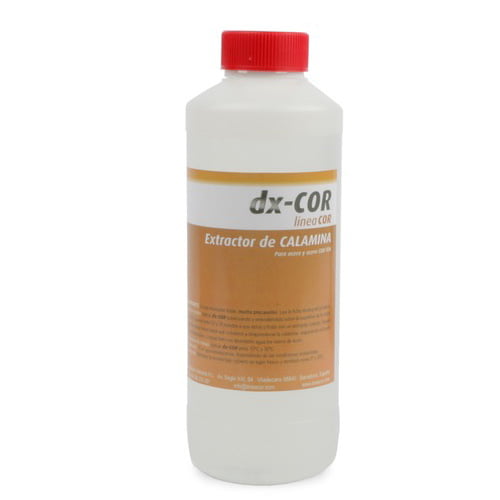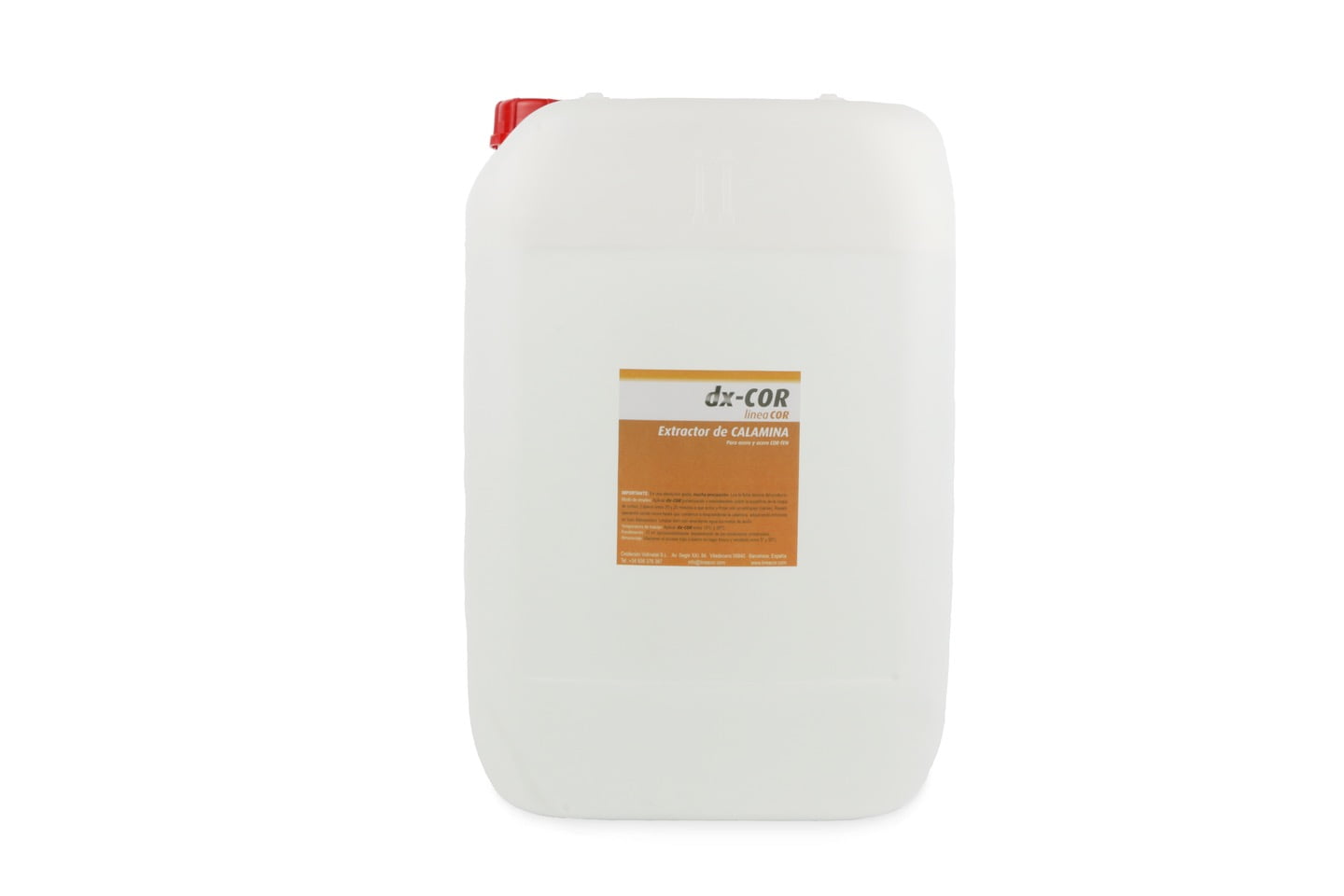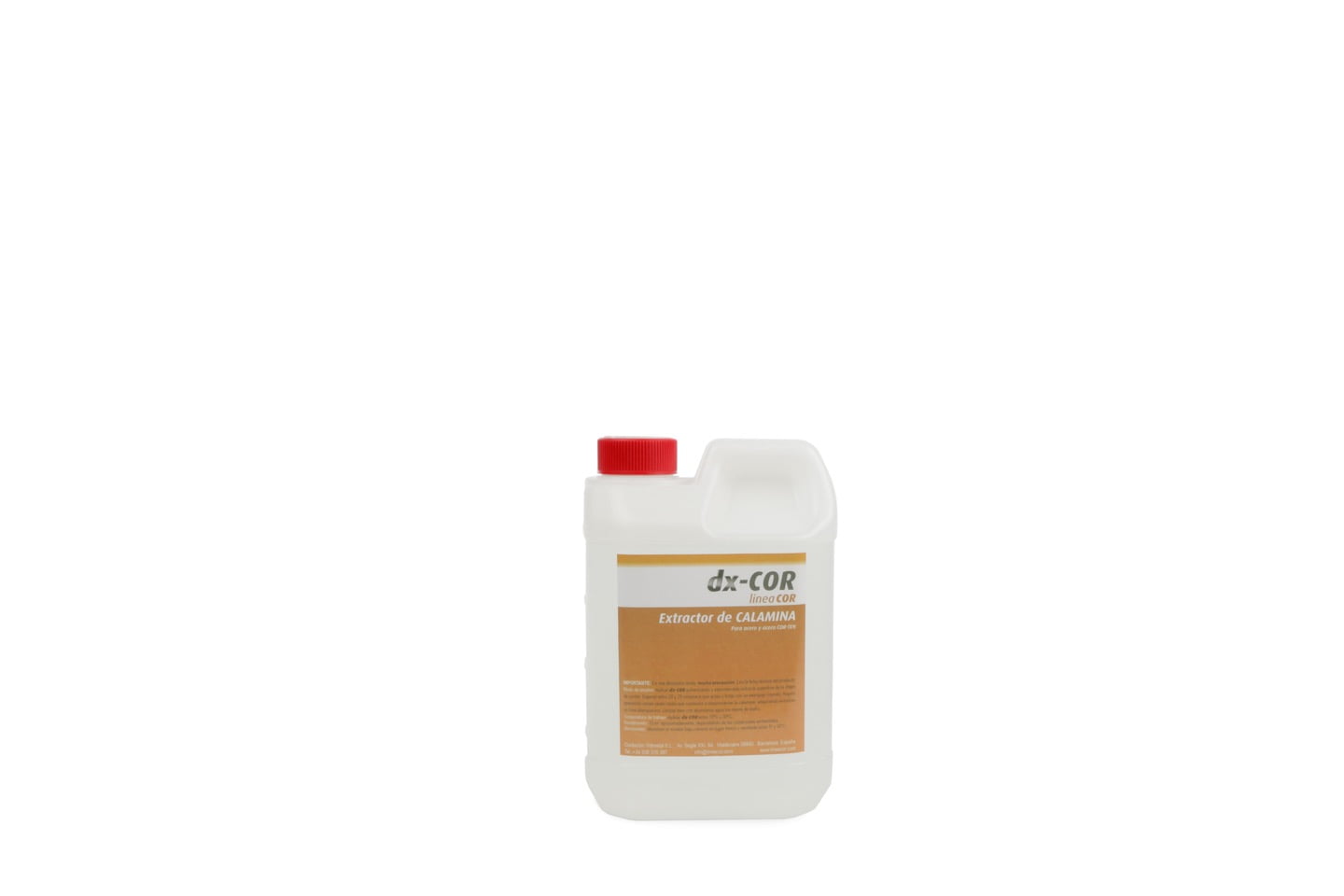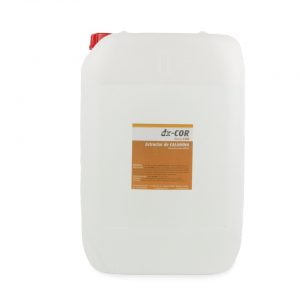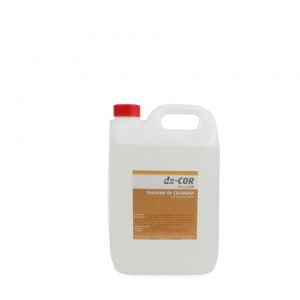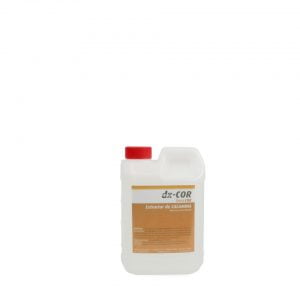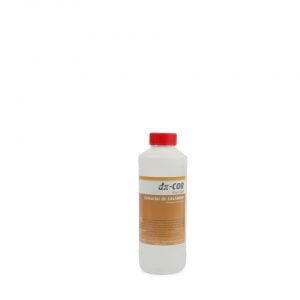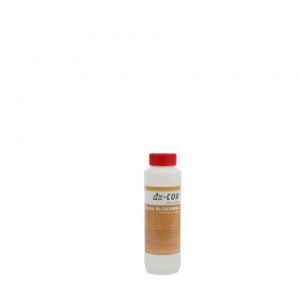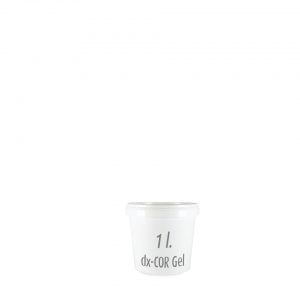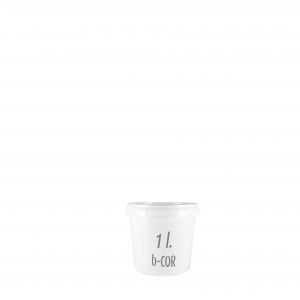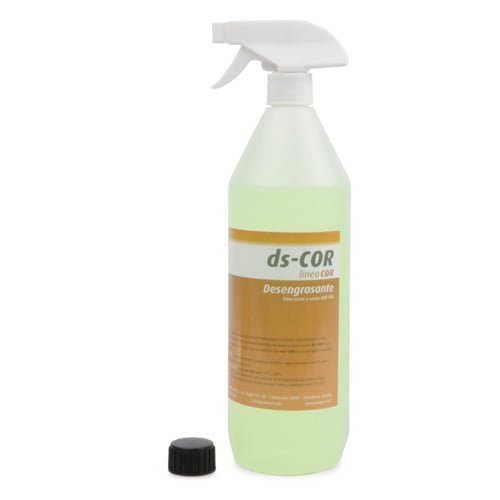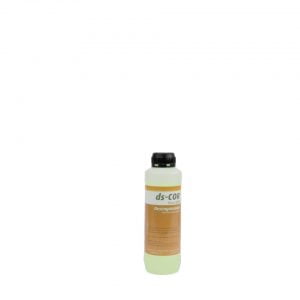14,00€ – 540,00€
This product can be used as an alternative to sand-blasting or the use of aluminium silicate for the removal of MILL SCALE from both steel and corten steel sheets, which have been manufactured using the hot-rolling process. MILL SCALE is a dark grey layer on the surface of the metal sheets, caused by this particular manufacturing method, and must be completely removed prior to applying any type of treatment to the surface of the steel. dx-COR is composed of a carefully selected mix of acids, which makes it highly effective in eliminating MILL SCALE without damaging the steel.
dx-COR is especially recommended when the surface area to be treated is not too large and when the use of sand-blasting becomes impractical. It is also a great solution when the installation of the steel has already taken place or the building is already in use. dx-COR is also recommended when there is risk of contamination to the surrounding environment from the dust caused by the sand-blasting process; using this product means that there is no need to remove the material and transfer it to a workshop for sand-blasting to take place.
dx-COR is also available as a gel (dx-COR Gel) and in that format, provides the best solution for applications that are situated in difficult-to-access areas or for vertical installations, for example.
VERY IMPORTANT: If the MILL SCALE is not totally removed, the oxidation process cannot be controlled and, for sure, any treatment applied to the steel will crack or result in osmosis taking place. This can happen over time, the speed of which is dependent on the environmental conditions that the steel is being exposed too.
Please read the product’s Technical Data Sheet and Safety Data Sheet carefully, to ensure understanding of how the product should be applied and to comply with relevant safety and environmental regulations.
FREQUENTLY ASKED QUESTIONS
dx-COR is a product designed for professional use and contains acid. As with similar products, it is ESSENTIAL to read the corresponding Technical Data Sheet (TDS) and Safety Data Sheet (SDS) BEFORE you start to use the product. Necessary precautions for safe usage include ensuring the work area is properly ventilated and that glasses, gloves, a mask and protective clothing are worn. Please make sure you always read the accompanying information leaflets; if by any chance they are missing, please call us and we can forward them to you.
The whitish surface colour will remain and where that happens, it will not oxidize. It will then have to be blasted with a rotary orbital sander and the process repeated. It is VERY IMPORTANT that once dx-COR has been applied, to continually monitor the steel surface while it is drying, to ensure that there is always product “acting” across the entire surface that is being treated. Do not allow any area to dry out. If you see that this is happening, quickly add a little more of the product to that particular area.
Blasting the steel with sand or aluminium silicate delivers better results but using this method is not always possible. The use of dx-COR is a worthy alternative and in certain cases can be the only possible option available (i.e. when the steel has already been installed on site or if it is a small piece of steel) or if you want to achieve a unique / special finish.
Yes, there is a small amount given off and that is why you need to work in a well ventilated area and protect yourself by wearing a mask (to avoid inhaling the gases) and rubber gloves (to avoid the product coming into contact with your skin). Please always read the product’s relevant Safety Data Sheet (SDS) and Technical Data Sheet (TDS).
No, horizontal application is the optimal means of achieving the best results. In vertical applications, the results are not as good and coverage is less homogenous as the liquid will naturally flow down to the bottom of the sheet in a vertical position. If the piece of steel that you are treating is in a vertical position, consider the use of dx-COR GEL instead.
For interior use, there is no problem, but for corten steel installed outdoors, sometimes osmosis can result if traces of MILL SCALE remain. Please note that with dx-COR, the extraction rate is around 80%.
Yes, of course, it works equally well for both materials. You just need to make sure to completely remove it, once the process is finished.
There are several, but the technique most recommended is to apply dx-COR with a roller (or spray it on abundantly) and after leaving it for 20 minutes, use a metal scouring sponge (we recommend “Nanas” brand; make sure to use gloves, mask, glasses, etc.) to scour the surface with force, in order to strip off the MILL SCALE. Another technique is to also apply dx-COR with a roller, but then remove it using a pressurized water gun. In this way you will strip off the MILL SCALE and remove the product at the same time. However this technique requires you to be working outdoors and in a surrounding environment that cannot be harmed by the splashing that can occur. If you undertake this work indoors, make sure you are in a workshop that is specifically suited to working with acids. Please ensure you read the corresponding Safety Data Sheet (SDS) and Technical Data Sheet (TDS).
Yes, but make sure the surface being treated is 100% covered. When spraying with dx-COR, it is advisable to apply a generous layer, so as the product takes effect, there is no risk of dry patches occurring and the steel remains completely covered by the product (patches that are not covered can result in permanent stains). Always read the product’s Safety Data Sheet (SDS) and Technical Data Sheet (TDS).
No, it is a water-based product.


